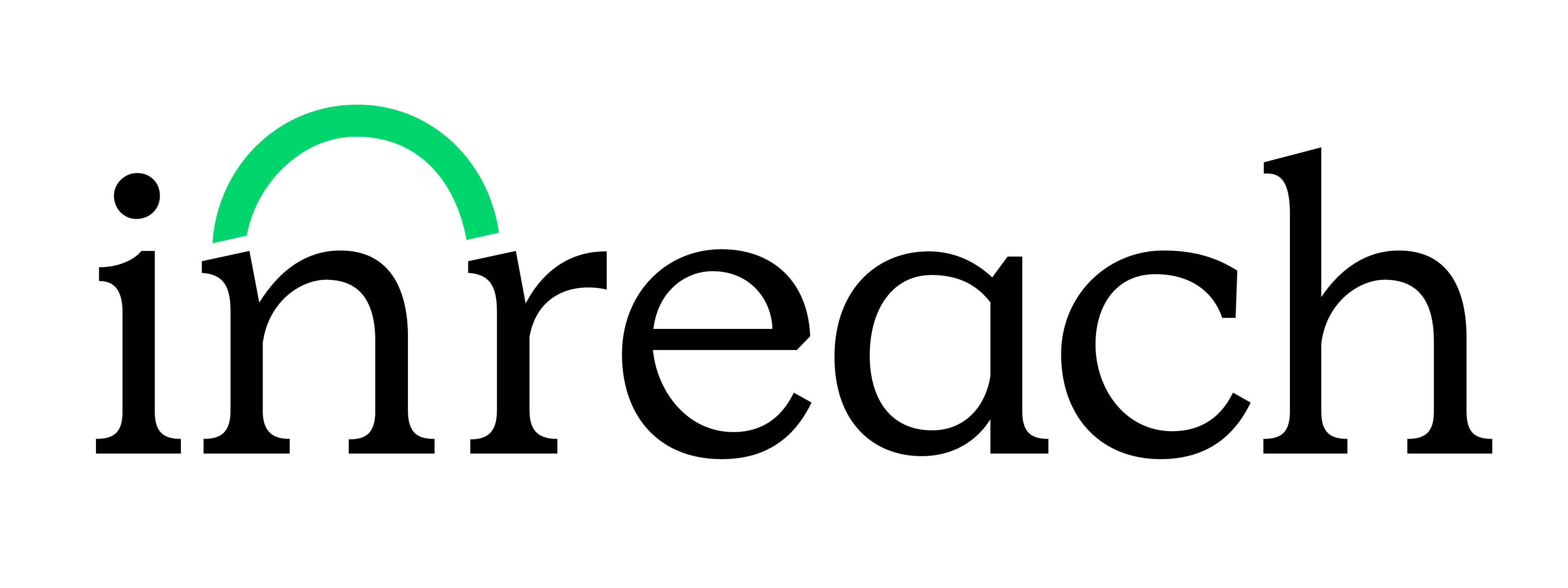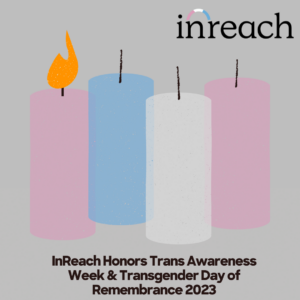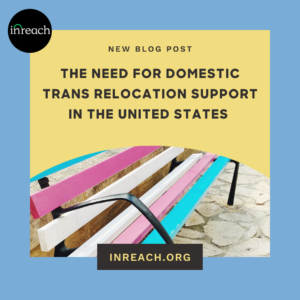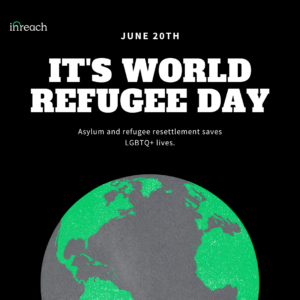No products in the cart.

How Recent Changes to U.S. Asylum Policy are Impacting LGBTQ+ Asylum Seekers
[vc_row][vc_column][vc_custom_heading text=”Guest Blog Post by Nora Nyi Myint, 2020 InReach Summer Intern” font_container=”tag:h3|text_align:center|color:%23000000″][vc_column_text]
On July 15, halfway into 2020’s Pride Month, the Trump Administration released new regulations on asylum which are extremely detrimental to the LGBTQ+ community. The news, while devastating under normal circumstances, is even more menacing given the global epidemic of coronavirus and is resulting in an intersectionality of hardships LGBTQ+ asylum seekers are facing today.
[/vc_column_text][/vc_column][/vc_row][vc_row][vc_column][vc_custom_heading text=”Common hardships that LGBTQ+ asylum seekers face in the U.S.” font_container=”tag:h4|text_align:center|color:%234892da” use_theme_fonts=”yes”][vc_column_text]Asylum seekers in general already face common hardships in the U.S. due to issues such as the I-589 asylum application being 12 pages long and only available in English; lengthy waiting periods without definitive immigration status, particularly given the significant backlog in U.S. immigration courts; not being entitled to a government attorney while in detention; not being permitted to work for the first 180 days after submitting their application; and being ineligible for state or federal benefits while applications are pending. Additionally, the U.S. is the only one out of 44 countries accepting individualized asylum applications that “denies asylum seekers access to critical services and significantly delays the ability to work.” The burdens placed on proving qualification for asylum are challenging for virtually all asylum seekers, and this is especially true for asylum seekers applying for asylum due to LGBTQ+ discrimination. The requirement for LGBTQ+ asylum seekers to provide detailed documentary evidence, including social media interactions and previous sexual encounters, forces individuals to revisit trauma. Oftentimes, people do not even have the evidence due to the fact that having it could lead to immediate persecution. Beyond this, it is extremely important to remember that many LGBTQ+ asylum seekers will find it difficult to disclose information about their sexual orientation or gender orientation to the authorities in the U.S. since they have been socialized to keep their experiences confidential for the sake of safety.
Further, the detaining of LGBTQ+ asylum seekers in detention centers is harmful, particularly as detention centers do not generally employ measures to keep LGBTQ+ people safe, visible through the high rates of sexual assault and systematic denial of access to necessary medical care, including hormone replacement therapy and HIV-related care. Recently, the Trump administration plans to bar asylum seekers from working, pushing them to“become familiar with the homelessness resources”. Conditions of trans asylum seekers are further harmed with the July announcement allowing the exclusion of transpeople from shelters and facilities that correspond with their gender identity, serving to re-traumatize those fleeing the similar conditions of abuse from their home countries.[/vc_column_text][/vc_column][/vc_row][vc_row][vc_column][vc_custom_heading text=”Recent changes to the U.S. asylum system impacting the LGBTQ+ community” font_container=”tag:h4|text_align:center|color:%234892da” use_theme_fonts=”yes”][vc_column_text]On June 15, 2020, the Joint Notice of Proposed Rulemaking (NPRM): Procedures for Asylum and Withholding of Removal; Credible Fear and Reasonable Fear Review was published in the Federal Register. Among many new regulations that undermine all aspects of the asylum system, sections 208 and 241(b)(3) disallows the use of “evidence promoting cultural stereotypes about an individual or a country, including stereotypes based on race, religion, nationality, or gender.” This effectively means the new proposed rule bans all claims to asylum due to gender-based and sexuality-based violence. This will be detrimental to women and LGBTQ+ asylum seekers fleeing persecution and discrimination. Furthermore, the rule redefines persecution by stipulating that infrequently used persecutory laws and policies will not qualify as persecution. Thus, LGBTQ+ people subject to resulting violence will not be permitted to seek asylum if, for instance, their home country gives death sentences for homosexual relations only “infrequently”.[/vc_column_text][/vc_column][/vc_row][vc_row][vc_column][vc_custom_heading text=”What is being done to combat these changes?” font_container=”tag:h4|text_align:center|color:%234892da” use_theme_fonts=”yes”][vc_column_text]Although the regulations that are so harmful are being forced onto LGBTQ+ seekers during these unprecedented times, advocates and organizations are combating them in various ways. While the Trump Administration began the requirement of asylum seekers to first apply for asylum in transit countries in an attempt to bar Central Americans from requesting asylum at the southern border, this policy was struck down by a federal judge in Washington, D.C on July 1, 2020. In response to the recent asylum NPRM, Immigration Equality, a U.S. based NGO dedicated to promoting LGBTQ+ immigrant and rights, shared a comments template to organize people to submit public comments opposing the new proposed asylum rules. After the given time frame for public comments from June 15 to July 15, a total of 86,661 unique comments had been submitted. Among other numerous immigrant organizations outspoken about their opposition to the regressions, The National Immigrant Justice Center (NIJC) rejects the new proposed rule, deeming it a violation of U.S. and international law.
The future seems uncertain but now is the time where we as individuals, communities, and corporations, must come together as one to preserve the asylum system of the U.S. and provide LGBTQ+ people with the right to safety. Our fight for justice continues on.[/vc_column_text][/vc_column][/vc_row]



